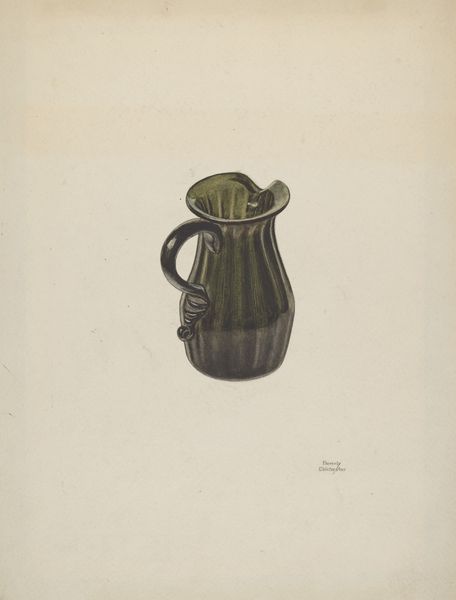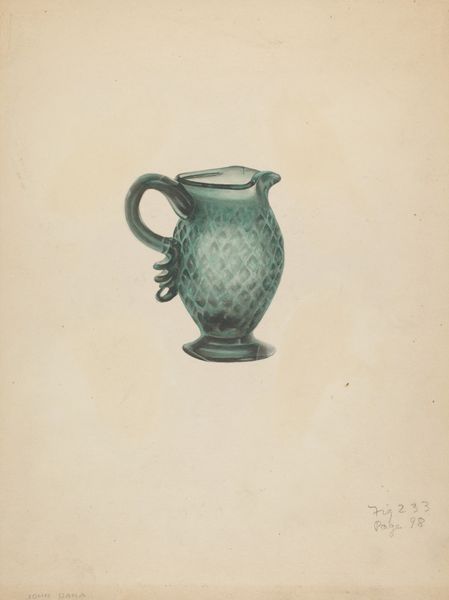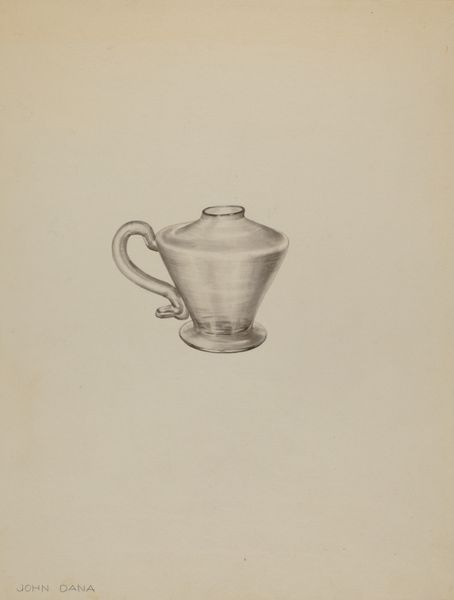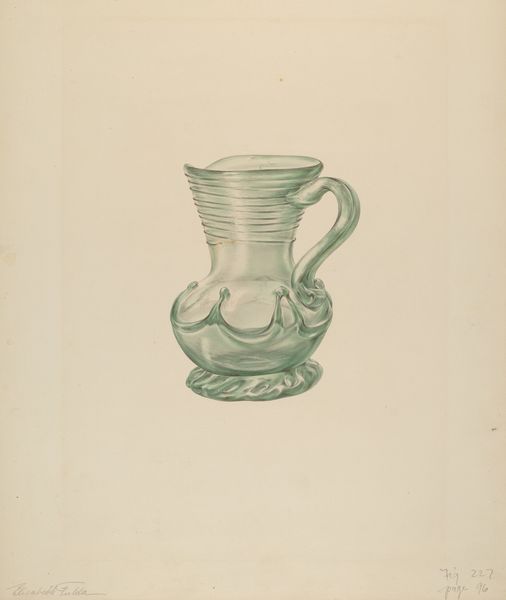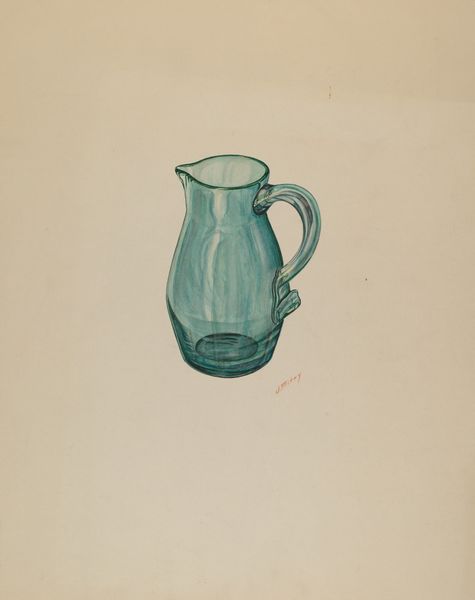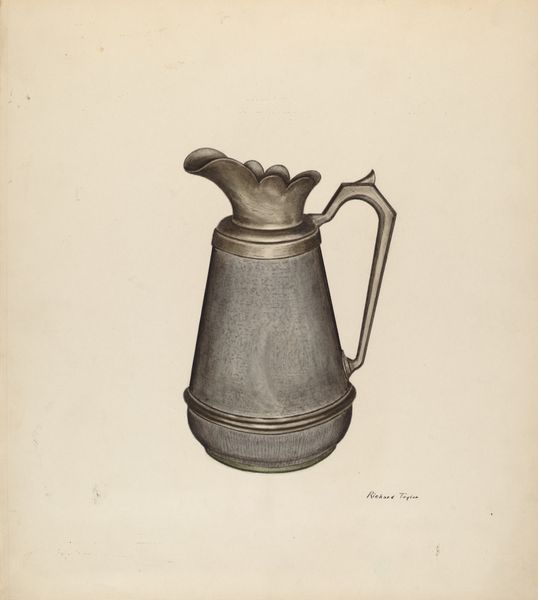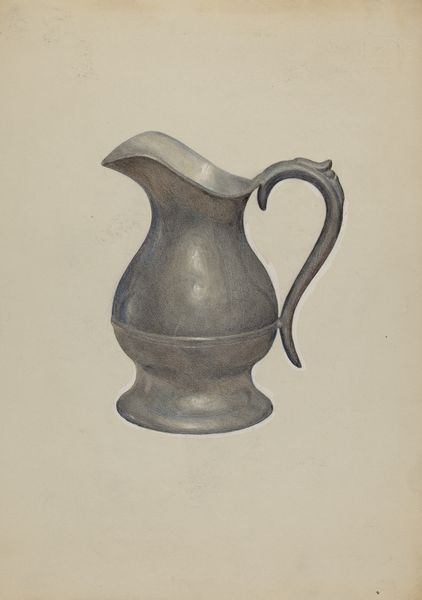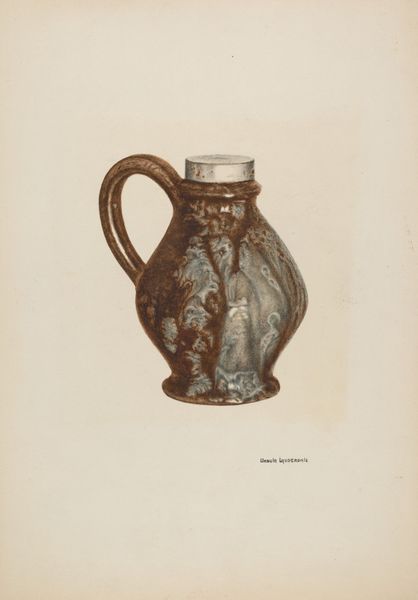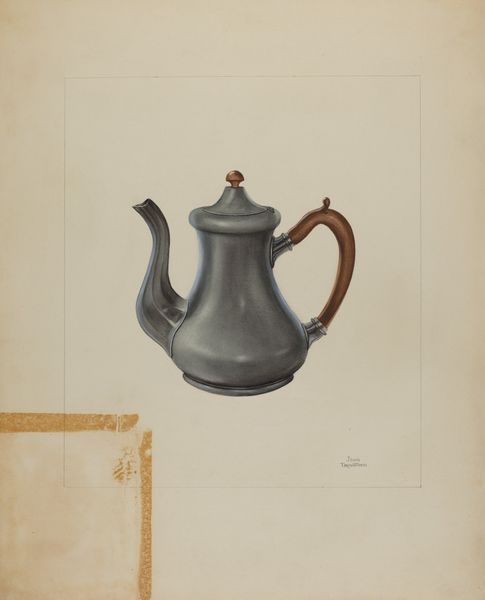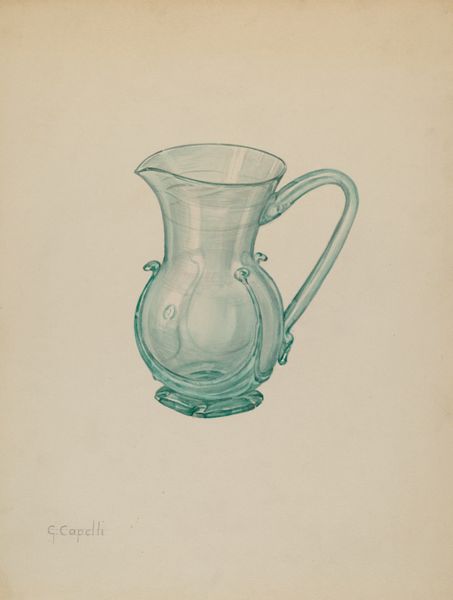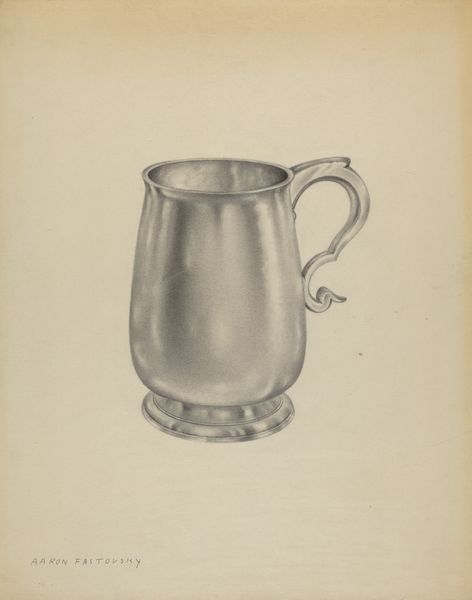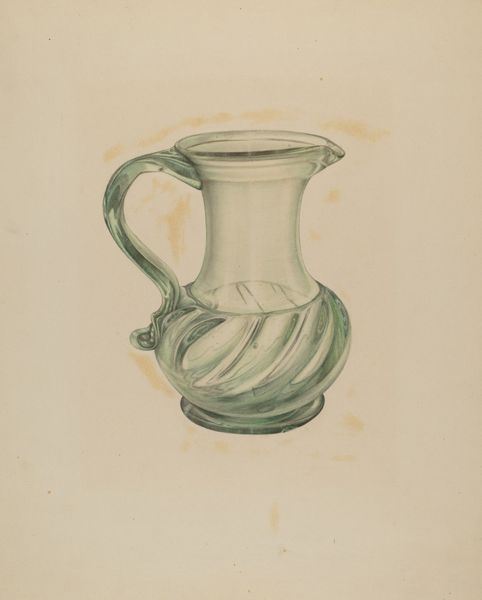
drawing, painting, watercolor
#
pencil drawn
#
drawing
#
negative space
#
painting
#
watercolor
#
pencil drawing
#
realism
Dimensions: overall: 28.4 x 22.1 cm (11 3/16 x 8 11/16 in.)
Copyright: National Gallery of Art: CC0 1.0
Editor: So here we have Janet Riza's "Creamer" from around 1936, a delicate drawing combining pencil and watercolor. There's something quite humble about its simple subject matter, but also quite elegant. What do you see in this piece beyond the representational aspect? Curator: What strikes me is the confluence of the ordinary and the aspirational within the historical context. Think about the 1930s, a period marked by economic hardship and social upheaval. An object like a creamer, typically associated with domesticity and perhaps a higher social class, takes on a charged symbolism. This is further reinforced when we factor in that Riza was a woman. Do you consider it a mere still life? Editor: I suppose not, especially when you highlight that social and economic reality. Does that elevate a simple object into a statement about accessibility and everyday beauty? Curator: Precisely! It begs the question: Whose stories are being told, and through what lens? A woman artist depicting an object related to domestic life can challenge traditional hierarchies within the art world and question preconceived notions around gender, labor and class. Editor: It’s like she's democratizing beauty, maybe subtly commenting on the societal roles of women through this seemingly mundane creamer. It prompts consideration for labor practices in manufacturing tableware at the time, doesn't it? Curator: Absolutely. The choice of medium is also relevant. Pencil and watercolor are generally accessible, immediate, relatable. It’s a far cry from grand oil paintings commissioned by wealthy patrons. How does this inform our understanding of its purpose and intent? Editor: I hadn't considered the materials themselves as a conscious choice adding to the commentary. The transparency of the watercolor is interesting. I walk away pondering how something seemingly straightforward can reflect layers of societal discourse. Curator: And that’s the power of art. To invite dialogue, question assumptions, and expose us to a myriad of voices, even from a humble creamer from the 1930s.
Comments
No comments
Be the first to comment and join the conversation on the ultimate creative platform.
